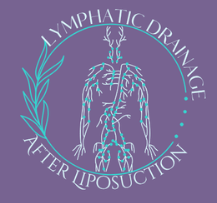How to Use a Lymphatic Drainage Brush
The lymphatic system plays a crucial role in maintaining a healthy immune system and detoxifying the body. However, unlike the circulatory system, it lacks a pump, relying instead on body movement, deep breathing, and external stimulation for optimal function. One of the most effective ways to support lymphatic drainage is by using a lymphatic drainage brush.
A lymphatic drainage brush is specifically designed to stimulate lymph flow, helping to remove toxins, reduce swelling, and enhance overall circulation. By gently brushing the skin in the direction of lymph flow, users can encourage natural detoxification, alleviate post-surgical swelling, and improve skin tone.
Are You In Need Of Service? Contact Sharon Thomas (720) 719-6233
I am committed to delivering customized treatment strategies crafted specifically for your requirements following liposuction surgery. Covering everything from how treatments restore functionality of the muscles that ultimately move lymphatic fluid, to bringing your nervous system more immediately from fight or flight after surgery trauma to the healing parasympathetic mode, which promotes more rapid recovery. I provide an extensive array of expert approaches and skill sets that I have perfected over the past decades. They restore your health, increase your flexibility, provide healing and flow to your lymphatic system, and establish a higher quality of life and wellbeing. This results in smooth, comfortable, and distinctly accelerated recovery from your liposuction surgery. My approach is scientific and measurable, leading to quicker recovery with a reduction in measurement of the surgical area(s) and visible reshaping, increasingly, after each of your four sessions. To learn more, Visit
Understanding the Lymphatic System
The lymphatic system consists of vessels, nodes, and organs that help remove waste, toxins, and excess fluids from the body. It’s a critical part of the immune system, ensuring that harmful substances don’t accumulate and cause health issues.
Poor lymphatic flow can lead to symptoms such as bloating, fatigue, swollen lymph nodes, and increased susceptibility to infections. Regular stimulation, including brushing, movement, and hydration, can help prevent these issues.
By engaging in lymphatic brushing, individuals can improve circulation, reduce inflammation, and support the body’s natural detoxification process—all without invasive procedures.
Choosing the Right Lymphatic Drainage Brush
Not all brushes are designed for effective lymphatic drainage. The best options feature soft, natural bristles with a firm texture that stimulates lymph flow without irritating the skin. Some brushes come with ergonomic handles for better control and ease of use.
When selecting a brush, consider factors such as:
- Bristle type: Opt for natural bristles that are firm but not scratchy.
- Handle design: A long handle can help reach your back and legs comfortably.
- Material quality: Look for organic and hypoallergenic brushes to prevent irritation.
To maintain your brush, clean it regularly with mild soap and water, ensuring it’s fully dry before storing to prevent bacterial buildup.
Step-by-Step Guide to Brushing for Lymphatic Drainage
Follow these steps for safe and effective lymphatic drainage brushing:
- Prepare Your Skin & Body: Hydrate properly before brushing to support lymph flow. Ensure your skin is dry for maximum effectiveness.
- Use the Correct Technique: Always brush in long, sweeping motions toward the heart, following the natural lymphatic pathways.
- Focus on Key Areas: Start from the soles of your feet, move upwards towards the legs, and continue with arms, back, and abdomen.
- Apply Gentle Pressure: Avoid pressing too hard, as excessive pressure can damage delicate lymph vessels.
Avoid brushing over sensitive areas, open wounds, or inflamed skin, as this could cause further irritation.
When and How Often to Use a Lymphatic Drainage Brush
For maximum benefits, lymphatic brushing should be done at specific times of the day and with appropriate frequency:
- Best time: Morning brushing helps energize and stimulate circulation, while evening brushing can aid in relaxation and detoxification.
- Frequency: For general maintenance, brushing 3-5 times weekly is recommended. If recovering from surgery or experiencing fluid retention, daily brushing may be beneficial.
- Integration into Self-Care: Pair brushing with other wellness routines like hydration, massage, and exercise.
Signs of overuse include persistent redness, irritation, or increased sensitivity. If this occurs, reduce frequency and pressure.
Common Mistakes and How to Avoid Them
To achieve the best results, avoid these common mistakes:
- Using excessive pressure, which can damage delicate lymphatic vessels.
- Brushing in random directions instead of towards the heart.
- Neglecting to clean the brush, leading to potential bacterial buildup.
- Expecting immediate results—lymphatic brushing is a consistent process.
FAQs
What is lymphatic drainage brushing?
Lymphatic drainage brushing is a technique that uses a specialized brush to stimulate lymphatic circulation, helping to remove toxins and reduce swelling.
How does lymphatic brushing differ from dry brushing?
While both involve brushing the skin, lymphatic brushing focuses specifically on boosting lymphatic flow, whereas dry brushing also aims to exfoliate the skin.
How often should I use a lymphatic drainage brush?
It is generally recommended to use the brush 3-5 times a week, depending on your skin sensitivity and desired results.
Can lymphatic brushing help with cellulite?
Yes, lymphatic brushing can reduce the appearance of cellulite by improving circulation and reducing fluid retention, though results vary by individual.
Should I shower before or after lymphatic brushing?
It’s best to brush before showering to remove dead skin cells and stimulate circulation, then follow up with hydration.
What’s the best direction to brush in for lymphatic drainage?
Always brush towards the heart, following the natural flow of the lymphatic system, starting from the extremities and moving inward.
